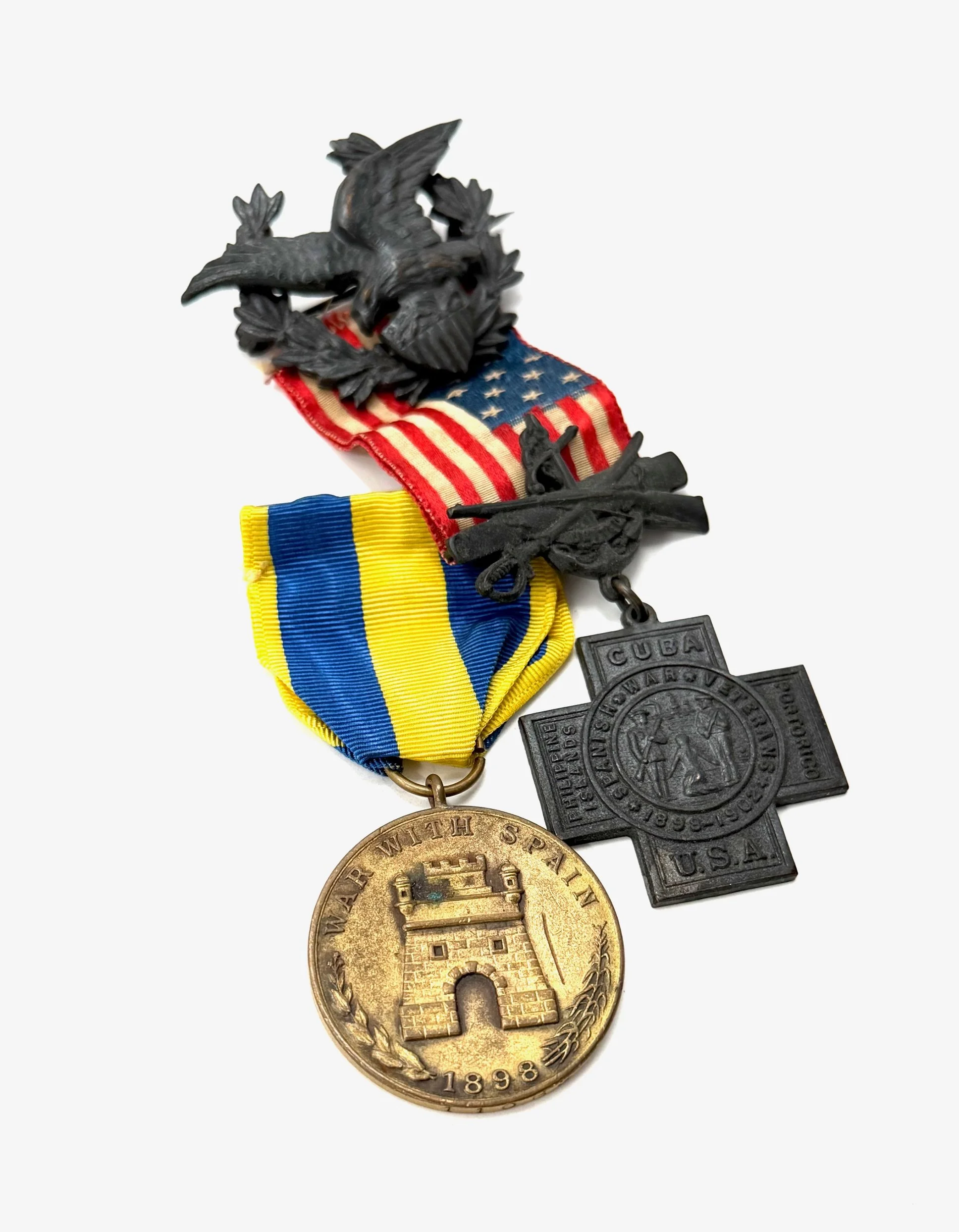Peace in the City of Brotherly Love: Philadelphia’s Jubilee and the American Empire
US War with Spain Medal & Spanish War Veterans Medal
In October 1898, the city of Philadelphia hosted one of the most elaborate public celebrations in its history — the Philadelphia Peace Jubilee, a multi-day event marking the end of the Spanish–American War and the dawning of a new era for the United States. While framed as a festival of peace, the Jubilee also revealed the nation’s growing imperial ambitions and its evolving sense of national identity at the turn of the twentieth century.
The Spanish–American War, fought in the spring and summer of 1898, was brief but transformative. The conflict ended Spain’s colonial rule in the Americas and the Pacific and established the United States as an emerging global power. With the signing of the Protocol of Peace on August 12, 1898, Americans turned from wartime mobilization to postwar celebration. Across the country, parades and receptions honored returning troops, but Philadelphia’s celebration was the largest and most symbolic of all.
Philadelphia — often called the “Cradle of Liberty” — was chosen to host the national Peace Jubilee in recognition of its historic role in the nation’s founding. Organizers envisioned a celebration that would unite civic pride, military spectacle, and national purpose.
Led by a committee of prominent Philadelphians, including Mayor Charles F. Warwick and industrialist John Wanamaker, preparations for the Jubilee began soon after the cessation of hostilities. The event was scheduled for October 25–28, 1898, and received the personal endorsement of President William McKinley, who agreed to attend.
The stated purpose was to commemorate the restoration of peace, honor the soldiers and sailors who had served, and reaffirm the country’s unity after the conflict. Yet underlying these sentiments was a deeper message — that the United States had emerged as a powerful and moral force in the world, capable of defending freedom and spreading civilization.
Over four days, Philadelphia was transformed into a city of celebration. Streets were decorated with flags, bunting, and electric lights; temporary arches and stands lined the parade routes; and the sounds of marching bands and cheering crowds filled the air.
The military parade on October 26 was among the largest public processions ever seen in the city. Tens of thousands of troops — including regular army regiments, state volunteers, and naval contingents — marched through the streets, cheered by hundreds of thousands of spectators. President McKinley reviewed the parade from a grandstand near City Hall, accompanied by members of his cabinet and other dignitaries.
The following day featured a naval parade along the Delaware River, where warships and smaller vessels were illuminated and saluted in a display of maritime strength. Religious services, concerts, and civic receptions completed the program, blending reverence with festivity.
Though billed as a “Peace Jubilee,” the event’s tone was far from pacifist. The parades and pageantry celebrated military victory and national expansion as much as the cessation of war. The United States had acquired new territories — Puerto Rico, Guam, and the Philippines — and was asserting itself as a global power. The Jubilee thus reflected both the optimism and contradictions of the American moment: peace was celebrated through displays of military might, and liberty was proclaimed amid the dawn of an imperial age.
For Philadelphia, the Jubilee also reinforced its identity as a civic and patriotic center. Newspapers of the time lauded the event as a testament to the city’s organizational ability and national loyalty. Yet later observers have seen in the Jubilee a revealing expression of Gilded Age nationalism, where industrial prosperity and imperial pride merged in public spectacle.


